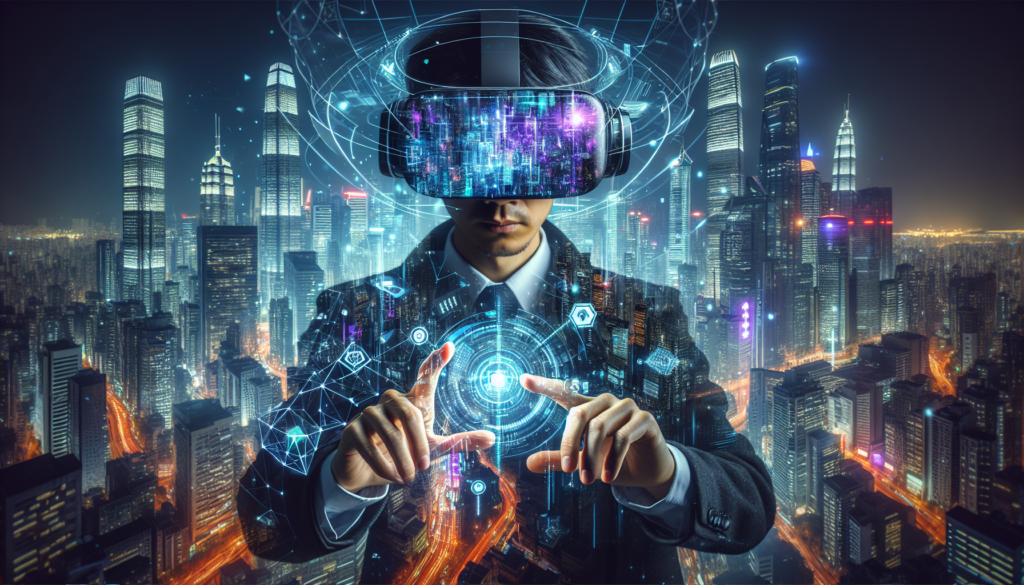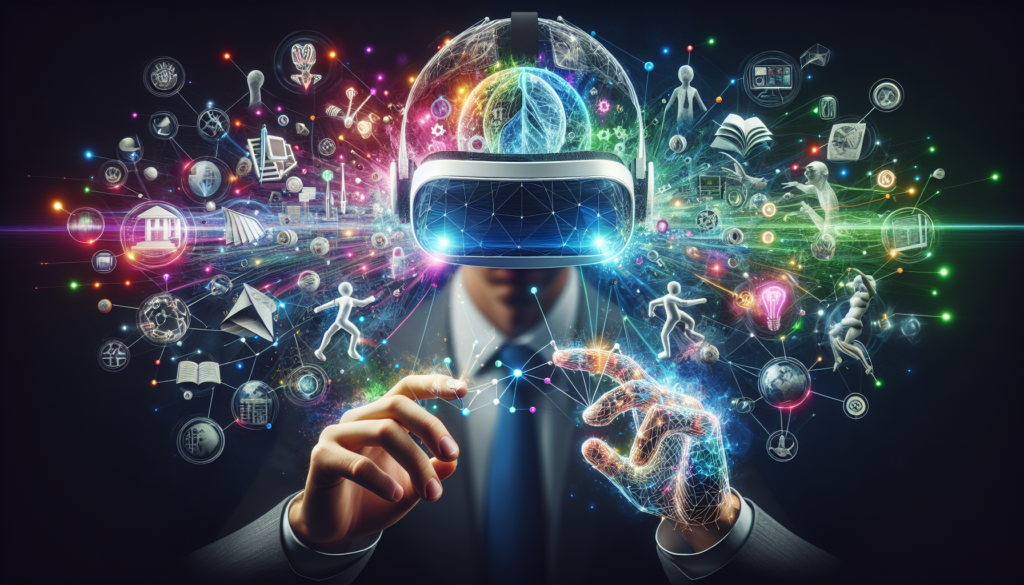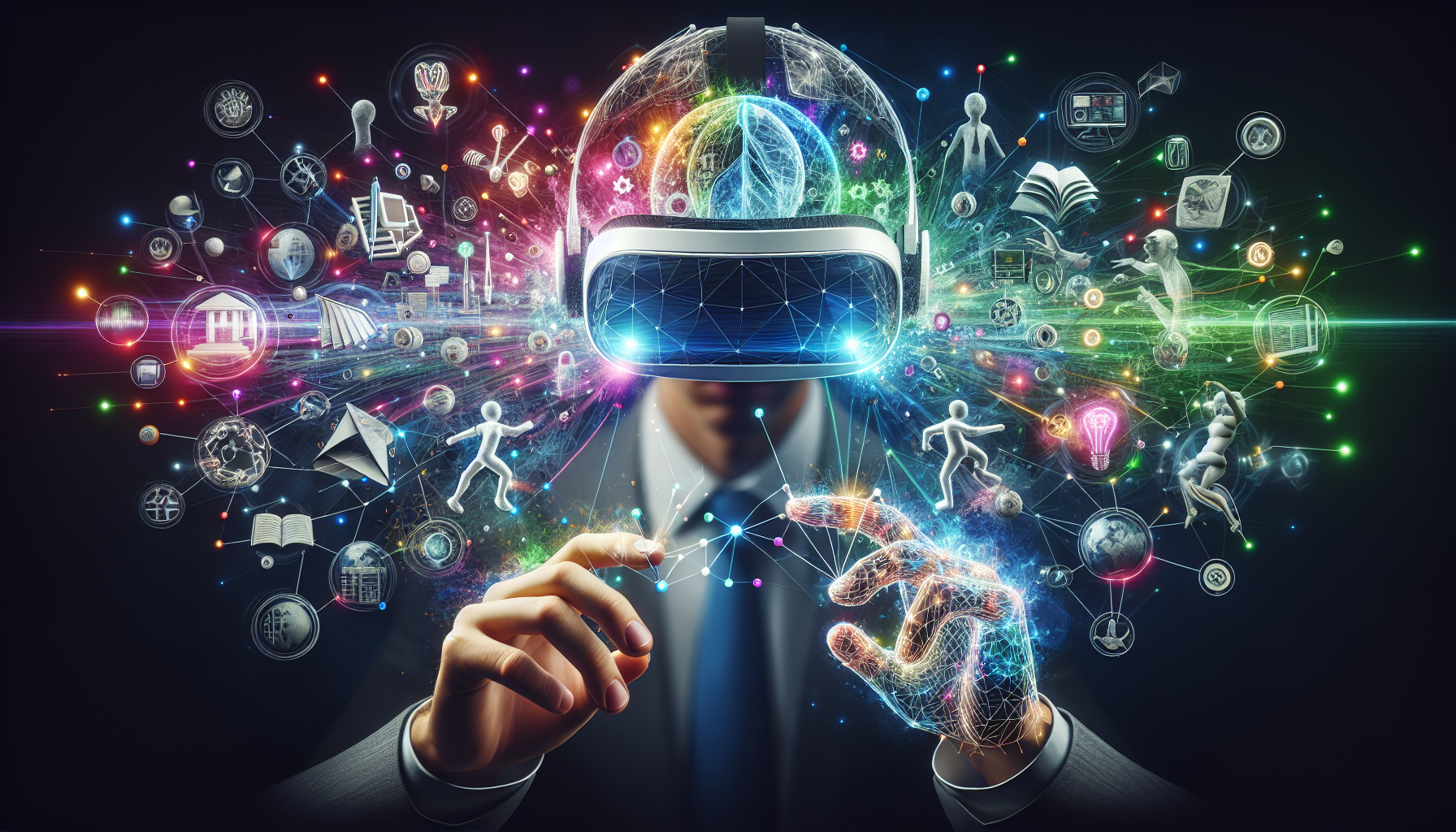When it comes to exploring the fascinating realms of augmented reality (AR) and virtual reality (VR), the possibilities seem almost endless. From virtually stepping into a new world to enhancing the real world around you, AR and VR have revolutionized the way we interact with technology. Whether it’s donning a VR headset and immersing yourself in a lifelike virtual environment or experiencing a Pokemon magically appear in your living room through AR, these exciting technologies continue to redefine our perception of what is possible. In this article, we will take a closer look at some captivating examples of AR and VR that have captivated the minds of technology enthusiasts across the globe.
Examples of Augmented Reality (AR)
AR in Gaming
Augmented Reality (AR) has become increasingly popular in the gaming industry, allowing players to immerse themselves in a virtual world while still being aware of their real surroundings. One notable example of AR in gaming is the incredibly popular mobile game, Pokémon Go. This game allows players to explore the real world while capturing virtual Pokémon characters using their smartphones. By blending the virtual and real worlds, Pokémon Go provides a unique and interactive gaming experience that has captured the enthusiasm of millions of players worldwide.
AR in Education
Augmented Reality has also found its way into the realm of education, enhancing the learning experience for students of all ages. One notable example is the use of AR in anatomy education. Instead of relying solely on textbooks and diagrams, AR technology allows students to visualize and interact with 3D models of the human body. This immersive approach offers a more engaging and hands-on learning experience, enabling students to grasp complex concepts more easily. Similarly, AR apps for language learning provide interactive tools to enhance vocabulary acquisition and language comprehension, making the learning process more enjoyable and effective.
AR in Healthcare
The healthcare industry has embraced augmented reality as a powerful tool for medical training, diagnosis, and treatment. Surgeons, for instance, can benefit from AR overlays during procedures, providing real-time visual guidance and additional information about patients’ anatomy. This enhances surgical precision, reduces risks, and improves patient outcomes. AR is also utilized in rehabilitation therapies, where patients can receive visual cues and feedback to aid their recovery process. Furthermore, AR is employed in mental health treatment, helping individuals suffering from phobias or anxiety disorders to confront and manage their fears in a controlled and immersive virtual environment.
AR in Retail
Augmented Reality has revolutionized the retail industry by providing customers with immersive and interactive shopping experiences. Companies have developed AR apps that allow customers to virtually try on clothing, accessories, or even makeup, providing a realistic representation of how certain items will look on them before making a purchase. Additionally, AR technology can help retailers enhance their physical stores by overlaying digital product information, personalized recommendations, or even interactive games onto the real-world environment. This creates a more engaging and personalized shopping experience for customers, ultimately boosting sales and customer satisfaction.
AR in Marketing and Advertising
AR has also emerged as a valuable tool in marketing and advertising campaigns. Brands have incorporated AR features into their promotional strategies, allowing consumers to engage with products or experiences in unique ways. For instance, AR can be used to create immersive product demonstrations, where customers can visualize and interact with virtual versions of products before making a purchase. Additionally, AR-powered ads can be placed in physical spaces or even on digital platforms, capturing the attention of potential customers and providing an interactive and memorable brand experience. These innovative marketing approaches leveraging AR technology have proven to be effective in capturing consumer interest, driving sales, and enhancing brand recognition.

Examples of Virtual Reality (VR)
VR in Gaming
Virtual Reality has taken gaming to a whole new level by immersing players in realistic and engaging virtual worlds. One of the most notable examples of VR in gaming is the Oculus Rift, a VR headset that provides an immersive gaming experience like no other. With the ability to track your head movements and render high-quality visuals, the Oculus Rift transports players into a virtual world where they can interact with the environment and experience gameplay in a whole new way. From action-packed adventures to serene exploration games, VR in gaming offers an unparalleled level of immersion and excitement.
VR in Entertainment
Virtual Reality has also made its mark in the entertainment industry, offering unique and unforgettable experiences. VR cinemas, for instance, provide an immersive movie-watching experience where you feel as if you are part of the film. Moreover, VR can transport users to virtual concerts, allowing them to experience live performances from their favorite artists from the comfort of their own homes. Additionally, VR theme parks have emerged, combining thrilling rides with immersive virtual experiences to create unforgettable moments of entertainment. Virtual Reality has undoubtedly expanded the boundaries of entertainment, providing experiences that were once unimaginable.
VR in Education
Virtual Reality has proven to be a valuable tool in education, enabling students to explore and learn about various subjects in a more immersive and engaging manner. For example, VR can simulate historical events, allowing students to virtually visit ancient civilizations or important historical landmarks. This hands-on approach to learning enhances comprehension and retention of information. Furthermore, VR enables the exploration of scientific concepts by providing virtual laboratories and simulations, allowing students to conduct experiments and observe phenomena that may otherwise be inaccessible in a traditional classroom setting. The integration of VR into education has the potential to revolutionize the way students learn and acquire knowledge.
VR in Healthcare
Virtual Reality is making significant advancements in the healthcare industry, offering numerous benefits for both patients and healthcare professionals. For patients, VR experiences can be utilized as a form of therapy, providing distraction from pain or anxiety during medical procedures. It can also be used for rehabilitation purposes, aiding patients in relearning motor skills or managing chronic pain. On the healthcare professional’s side, VR can be employed in surgical training, allowing surgeons to practice complex procedures in a virtual environment before operating on actual patients. This enhances surgical skills and improves patient safety. With its diverse applications, VR has the potential to revolutionize healthcare practices and improve patient care.
VR in Architecture and Design
Virtual Reality has become an indispensable tool in the fields of architecture and design. Architects can use VR to create immersive experiences that allow clients to walk through virtual representations of buildings, giving them a realistic sense of the design before construction begins. This enables clients to provide valuable feedback and make informed decisions. Additionally, VR can be utilized in interior design to help visualize spaces and experiment with different layouts, colors, and materials. This allows designers to refine their concepts and offer clients an accurate preview of the final result. Virtual Reality has transformed the way architectural and design professionals communicate their ideas, leading to enhanced collaboration and better outcomes.
In conclusion, augmented reality and virtual reality have both found diverse applications in various industries. From gaming and education to healthcare and marketing, these immersive technologies have opened up exciting possibilities for enhancing experiences, improving learning outcomes, and pushing the boundaries of innovation. As technology continues to advance, we can expect even more exciting developments in the realms of augmented reality and virtual reality, unlocking new potentials and transforming the way we interact with the world around us.

